NOTE: I'm not making any comments on the effects of any add-on product on any drone's performance. While anything that reduces heat rejection by insulating or reducing airflow may increase the tendency of a drone to overheat, I'm NOT suggesting that the products discussed in this thread create a problem. I've never seen one to even really know what they are or how they fit.
Any air that leaves the volume of the body interior will be replaced by air entering the body from openings, designed (vents) or accidental (poor seal on shell seams, holes where arms attach, etc.).
So, if air is leaving the body of the drone as a part of "hot air release" it IS being replaced by air entering the drone body through other openings.
Exactly, that's been my sole point. It turns out there's a pretty interesting system in the
Mini 4 Pro. The more I look at DJI drones, the more impressed I am with the engineering that goes into them.
Instead of flying the
M4P in today's afternoon heat and humidity, I poked around in its innards to find the paths for air to flow in, through, and out. I removed the battery and shined a small light inside for a better look. I also looked at an excellent disassembly and repair video that shows the interior structure and components. The link is below.
In forward flight, air can enter through the large vents in the front of the drone, flow around all sides of the electronics and the battery, and then exit out the top rear, sides, and bottom of the drone body.
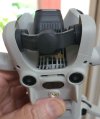
Particularly important for cooling, air from behind the gimbal is routed through several long channels in the top of the big heat sink mounted to the motherboard. Those channels connect directly to the two black vents on the top rear of the drone. (The image is a screen capture from the video.)
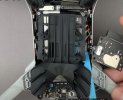
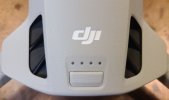
Lower in the interior of the drone, there are flow paths across the bottom side of the circuit board and around the battery, with exits at the four vents on the bottom of the drone, just aft of the auxiliary light, There are two odd screened openings between the downward sensors that connect to the interior of the drone.
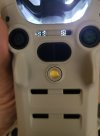
Warm air can also exit the battery area through the gaps at the two rear arm pivots.
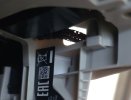
There are some other interesting things inside. I was surprised to see that there are four foam pads below the circuit board, presumably to thermally isolate it somewhat from the battery.
Good disassembly and repair video:















